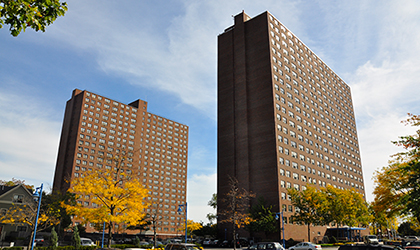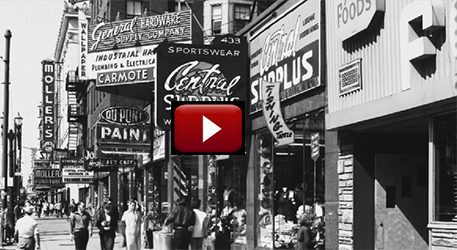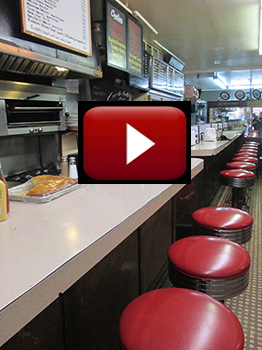Urban Planners Capture City Stories
-
-
slice.mit.edu
- 2
Filed Under
Recommended
Their resulting multimedia projects revealed the cooperative culture of MIT’s PIKA dorm, the upward path of a homeless addict turned Dorchester home owner and family man, and a South End sandwich shop with a clientele for the history books.

Graduate students Ashwin Balakrishnan and Rachel Finkelstein reported on the controversies surrounding Rindge Towers, the largest affordable housing development in Cambridge. Opened in 1971, critics still dismiss the three 22-story buildings as “urine towers”—an unwelcome eyesore to the surrounding Cambridge neighborhood. But for residents, the towers’ 504 apartments are home to a rich melting pot of diverse cultures, ages, and experiences.
“The people here are my family,” remarked Tenant Association President Pat Casola in an interview with the students. Under her organizing force, tenants prevented the mid-1990s market-rate conversion of all apartments, which would have forced many to find new homes.

Graduate students Lawrence Barriner, Kirsten Greco, and Ruth Sappelt uncovered the colorful past of 899-907 Massachusetts Avenue in Central Square, Cambridge. Home to Toscanini’s Ice Cream, Cinderella’s Pizza, and at one time a brothel, this post-Civil War, mixed-use building sits on real estate that “for many years has been worth more down that up,” according to owner Patrick W. Barrett III.
The building’s uncertain future demonstrates a common challenge for independent mom and pop shops struggling to compete with more powerful big box chains. “You see this all the time in changing neighborhoods where things that seem like irreplaceable institutions go away,” said Toscanini’s owner Gus Rancatore.
 Charlie's Sandwich Shoppe
Charlie's Sandwich Shoppe
Charlie’s Sandwich Shoppe is another irreplaceable institution that graduate student Carmela Zakon and Nse Umoh Esema MCP '12 explored.
Located at 429 Columbus Avenue in Boston’s South End, the 86-year old restaurant was one of the first to serve black customers and became a popular late night hang out for Boston jazz musicians and the Black Porters Union. Legend has it that a young Sammy Davis Jr. tap danced in the restaurant’s entry way for extra change.
“You have completely changed my perspective on what a city is,” said Dewald LaGrange, project manager at Epi Use, who attended the final project presentations. “In order to do proper city planning, you have to understand people.”
In this Building was taught by MIT Associate Professor J. Phillip Thomson, Boston Globe Assistant Metro Editor Steve Wilmsen, and Alexa Mills MCP '08.








Comments
James Nixon
Sat, 12/14/2013 7:32pm
This sounds like a great course. When I was in Course IV in the 70's there was a song lyric: "It depends on who is looking at the tenement walls, whether he's coming home or passing through." 30-plus years later I appreciate that even more.
Mohd Shukri HAJINOOR
Fri, 11/22/2013 11:22am
I wish I did the same when I was an MCP student in 1986